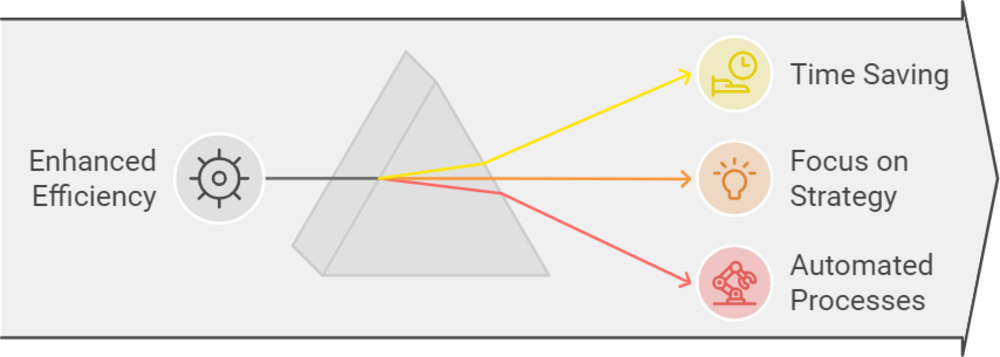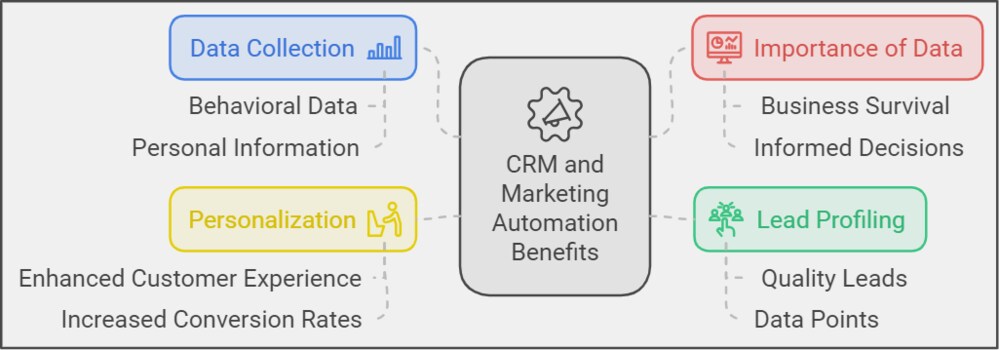How to Automate Your Sales Workflow Using Pipedrive CRM
Learn how to streamline & automate your sales workflow using Pipedrive CRM to boost efficiency and drive better result.

Marketers can significantly increase the efficiency of their entire workflow if they automate certain processes. Let’s see what makes marketing automation so important.
Marketing is a complex thing with multiple facets and room to always do something new and extraordinary. But while you think of ideas that will instantly grab the attention of prospects, automated processes can take care of all the mundane tasks for you.
Building relationships is probably the most crucial aspect of marketing. However, you need to go through several tasks to get to the part where you can show your competence to a lead. And a lot of these tasks are far from being interesting at all.
But I am here to tell you that it is precisely for these reasons that you should use marketing automation.
Marketing automation refers to the use of software to automate different marketing processes. For example, suppose you want to use a drip campaign to capture leads and you have prepared a set of emails for the same. Now, conventionally, you would send different emails at different times based on how a particular lead is reacting to the contact.
Marketing automation software will allow you to schedule the drips and will automatically send follow-up emails according to the reaction of the prospect.
You will often hear that ‘when used correctly, marketing automation has the potential to nurture your leads in a highly specific and targeted way, one which has a high chance of converting them into clients. But for this to happen, you have to make sure NOT to automate the wrong processes.
A common example is buying a list of prospects rather than building one on your own. Well, now that’s out of the way, let’s see what makes marketing automation so important.
Marketers can significantly increase the efficiency of their entire workflow if they automate certain processes. Your social media campaign can run smoothly if you schedule posts rather than posting content manually every single day (much like drip campaigns which we talked about in the previous section).

If such tasks don’t call your attention, you will spend more time coming up with unique strategies to capture leads. In a nutshell, marketers can use their time for valuable aspects of the workflow rather than worrying about administrative tasks.
If you have ever worked in either the sales or the marketing team, you know that strife between the two can easily occur. The marketing team will argue that they are bringing in leads but sales folks are not taking timely actions. Sometimes, salespeople find out that a prospect has been receiving way too many messages as both teams are targeting them.
It’s a common enough problem in organizations and can be solved to a large extent by structuring processes properly, and that’s where marketing automation comes in. The problem mainly occurs due to misalignment; however, if processes become transparent for everyone, both teams can easily get on the same page.
Marketing automation will help ensure that better quality leads (more about this later) are coming in and that time-consuming and repetitive processes are streamlined.

As you read ahead, you’ll notice that it is very important to track the funnel stage of leads in your pipeline. Why? Because everything you do after identifying a lead depends on their position in the funnel.
Suppose a lead is at the top of the funnel and without considering it, you are sending them product portfolios. This will especially not work for SaaS companies. If a lead doesn’t even know what kind of service you are offering, there’s no way they are going to buy the product.
Similarly, if you keep showing awareness-building content to leads who are at the bottom of the funnel, they’ll eventually tire and drop out of your network.
Hence, marketers need to know the lifecycle stage of a lead. Marketing automation software does this effectively by tracking the lead on the browser and studying their online behavior.
You’ll rarely hear the term ‘marketing’ without ‘personalization’ these days. This is because marketers are aware that they can’t go far without personalizing content, let alone close high-value deals.
The leads in your funnel are at different stages and should be targeted through curated content that is relevant to them. Marketing automation software will tell you at what stage a particular lead is and allow you to create content for them accordingly.
There are a lot of marketing automation software these days that give you actionable recommendations to improve your content quality. And let’s not ignore out-of-the-box content that can help you more than anything. Are you targeting leads through video content, personalized decks, or stuff they may find funny? No? It’s all worth a try, believe us.
Build a relationship with your audience by using all the information you have about them and your business will grow in ways you might not have thought. Marketing automation will be an asset when you go for such campaigns.
Leveraging a CRM tool alongside marketing automation is probably the most helpful thing you can do for your business. Data is everything for organizations and if you don’t have enough data to act on, you can’t hope to stay afloat in business.

A CRM tool can fetch behavioral and even personal information about quality leads. Think about how much you can do with such data points. Personalization becomes ten times easier and your chances of closing a client will surely plummet.
With all the important data you have at your disposal, you can be sure of one thing- you won’t have to deal with as many unqualified leads. Lead scoring systems of CRMs are further important, as they let you know when a lead has become a marketing qualified lead and when it crosses the score to become a sales qualified lead.
After each of these events, it is also important to nurture leads properly. Now, even with the help of a marketing automation tool, there are bound to be leads that won’t convert. But, you surely can’t skip the nurturing process in any case, which unfortunately is time-taking.
Marketing automation can take this task off your hands and ensure that all the leads in the pipeline are being nurtured properly. While a lead may not be ready to buy your product at the moment, they may be ready to convert after some time.

This is somewhat related to personalization but is an effect of the latter. When you personalize the content by considering user intent, you show the prospect that you have been thorough. This lets them know that you have discovered that your product can possibly be of use to them.
If you’re employing such strategies, you’ll notice that leads are engaging more with your content and emails. And well, if the engagement rate is increasing, the chances of closing deals increase as well. Behind such a strategy lies marketing automation, because to get to this stage, you’ll need to automate certain processes (as discussed above) that increase the value of your content.
As important as reporting and analytics are marketers aren’t usually fond of keeping track of a multitude of data, especially if one has to do it manually. But, with the help of a marketing automation tool, reports can be generated easily. There, doesn’t that sound like a lot of your problems were just solved?
You can streamline all your processes, see which process needs improvement, what campaigns are working efficiently and can be used again, and basically know any points that need to be changed if you have proper reports at your disposal.
There are a lot of touchpoints that can be automated using marketing automation software, and well, as we’ve tried to show, your work can become more result-oriented. Pick out areas where you think your workflow is lagging and check if marketing automation can help in that area.
Otherwise, processes like lead lifecycle tracking, data gathering and feeding in the CRM, and scheduling emails, and social posts are certainly the areas that can be automated.